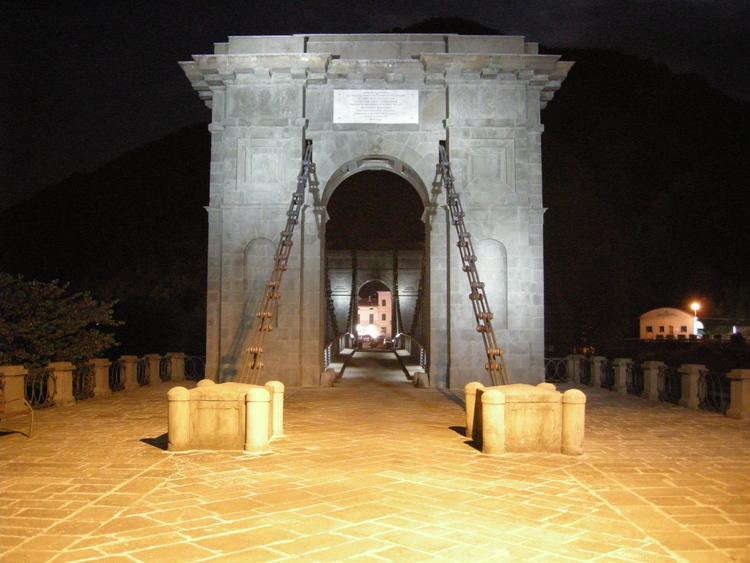Name Lorenzo Nottolini | ||
 | ||
Lorenzo Nottolini (May 6 1787 – September 12 1851) was an architect and engineer of the Neoclassic style in Lucca.
Biography
He was born at Capannori, but lived and mainly worked in Lucca and he is famous for the Nottolini aqueduct and the urban refurbishment of the site known as the Piazza Anfiteatro.
All his siblings were educated in the same seminary, where three out of five brothers became priests and his only sister became a nun.
In 1807, one of the teacher of Lorenzo, Giovanni Lazzarini, worked for the Duchess of Lucca, Elisa Baciocchi, sister of Napoleone Bonaparte. Lazzarini asked the young Nottolini to become his assistant in his redesign of Villa Reale in Marlia. By 1810, Nottolini had graduated from studies and served as a surveyor. He was recruited at once in the public administration and became assistant of the head engineer. A year later Nottolini obtained a 1500 franc scholarship from Duke Felice Baciocchi, husband of Elisa, and travelled to Bologna and then Florence. He enrolled at the Academy of Fine Arts, Florence, where he met Canova. By 1818, he moved to Rome, where he met Giuseppe Valadier and attended the Academy of Saint Luke, Rome.
In Rome, He met Maria Luisa of Bourbon, who became the Duchess of Lucca after the fall of Napoleon. Once rising to power, Maria Luisa would appointed him Royal Architect for the Kingdom of Etruria, and two years later. Engineer of the Counsel of Water, Roads and Woods.
Main works The Acqueduct of Nottolini (1823 - 1851) is one of his best known works, since it is visible from the autostrada A11 that connects Florence to Pisa.
Nottolino was involved in part of what is described as the Great Project of Tuscany, wherein a number of marshes and swamps were drained to create arable land. In Lucca, the lake of Bientina or Lake of Sesto were partially drained. The project also involved the architects and engineers from Florence: Leonardo Ximenes, Vittorio Fossombroni and Antonio Manetti.
Nottolini was involved in the urban renewal of Lucca: The defensive moats were filled in (1818-1820). The Teatro del Giglio was refurbished (1819). He designed the Specola of Lucca, in San Pancrazio (1819). He cleared out the Piazza known as Anfiteatro Square in Lucca (1830-39).
Nottolini traveled to Germany and England to study new techniques of bridge construction. He used this knowledge to design the Ponte delle Catene in Fornoli in the region known as the Bagni di Lucca. Construction of the bridge continued after Nottolini's death in 1851 in Lucca, and lasted until 1860.
